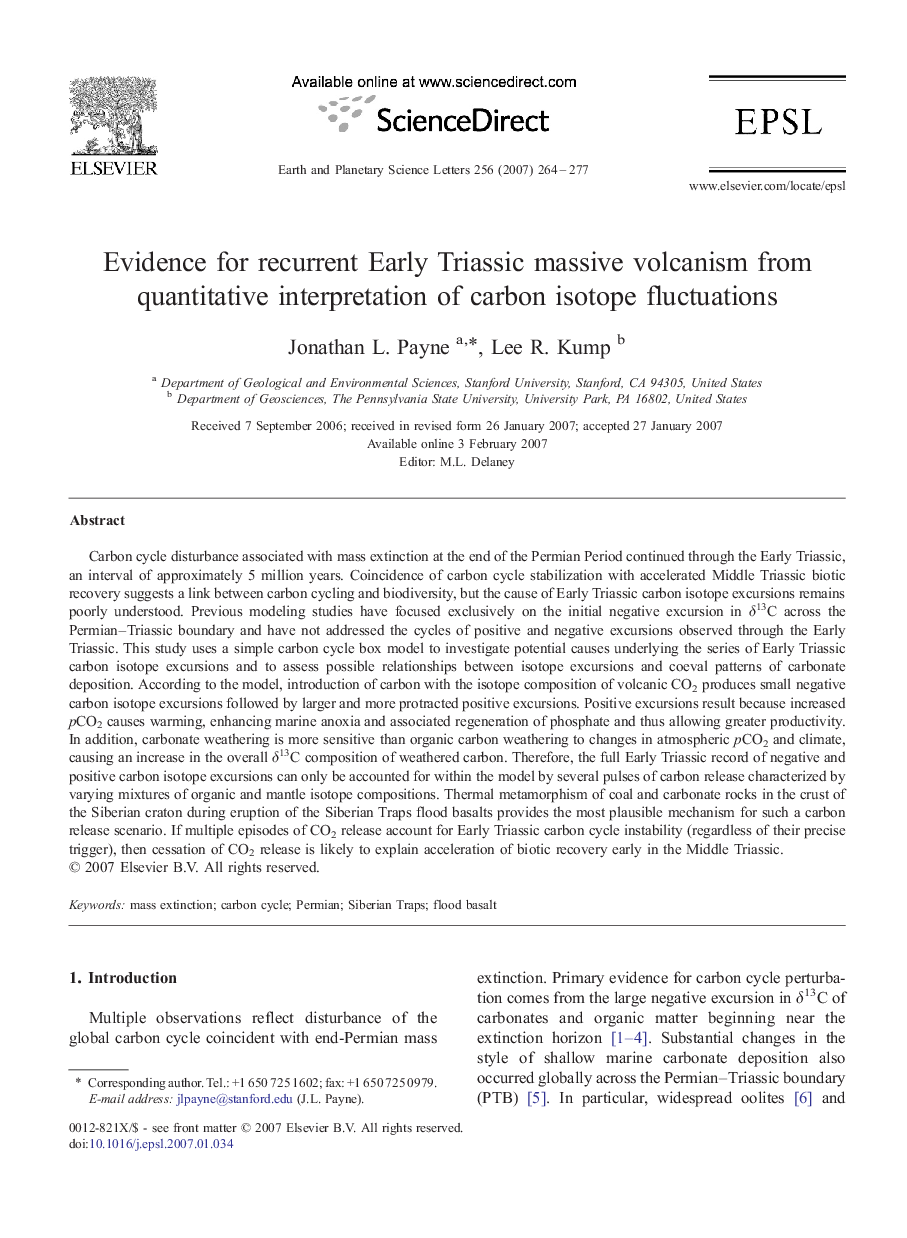| کد مقاله | کد نشریه | سال انتشار | مقاله انگلیسی | نسخه تمام متن |
|---|---|---|---|---|
| 4680484 | 1634923 | 2007 | 14 صفحه PDF | دانلود رایگان |

Carbon cycle disturbance associated with mass extinction at the end of the Permian Period continued through the Early Triassic, an interval of approximately 5 million years. Coincidence of carbon cycle stabilization with accelerated Middle Triassic biotic recovery suggests a link between carbon cycling and biodiversity, but the cause of Early Triassic carbon isotope excursions remains poorly understood. Previous modeling studies have focused exclusively on the initial negative excursion in δ13C across the Permian–Triassic boundary and have not addressed the cycles of positive and negative excursions observed through the Early Triassic. This study uses a simple carbon cycle box model to investigate potential causes underlying the series of Early Triassic carbon isotope excursions and to assess possible relationships between isotope excursions and coeval patterns of carbonate deposition. According to the model, introduction of carbon with the isotope composition of volcanic CO2 produces small negative carbon isotope excursions followed by larger and more protracted positive excursions. Positive excursions result because increased pCO2 causes warming, enhancing marine anoxia and associated regeneration of phosphate and thus allowing greater productivity. In addition, carbonate weathering is more sensitive than organic carbon weathering to changes in atmospheric pCO2 and climate, causing an increase in the overall δ13C composition of weathered carbon. Therefore, the full Early Triassic record of negative and positive carbon isotope excursions can only be accounted for within the model by several pulses of carbon release characterized by varying mixtures of organic and mantle isotope compositions. Thermal metamorphism of coal and carbonate rocks in the crust of the Siberian craton during eruption of the Siberian Traps flood basalts provides the most plausible mechanism for such a carbon release scenario. If multiple episodes of CO2 release account for Early Triassic carbon cycle instability (regardless of their precise trigger), then cessation of CO2 release is likely to explain acceleration of biotic recovery early in the Middle Triassic.
Journal: Earth and Planetary Science Letters - Volume 256, Issues 1–2, 15 April 2007, Pages 264–277